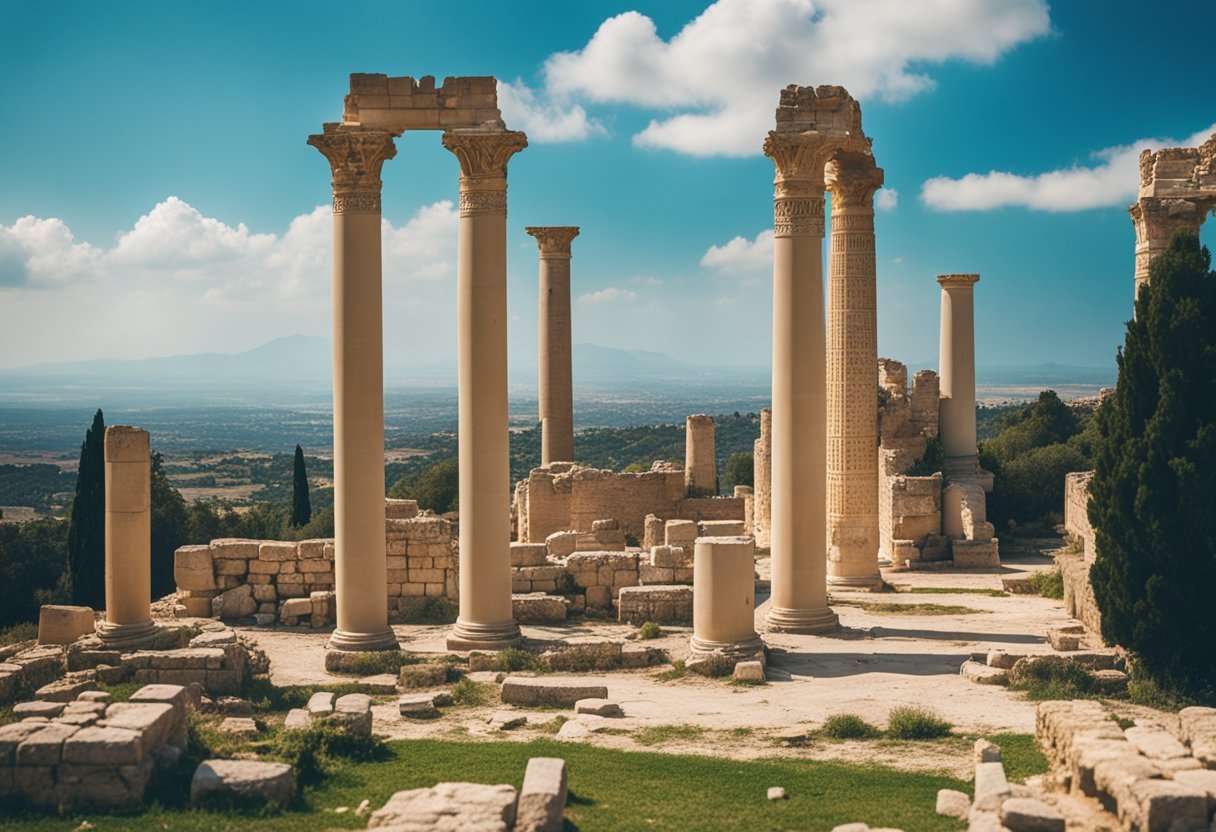Nestled on the northern coast of Africa, Carthage is a fascinating blend of ancient history and modern charm. Known to be one of the most influential cities of the classical world, Carthage once stood as a dominant maritime power and affluent trading hub. Today, visitors to Carthage can explore its rich archaeological sites amid the vibrant atmosphere of modern Tunis.
Founded by the Phoenicians of Tyre in 814 BCE, Carthage grew into an empire that boasted incredible wealth and influence. The city is renowned for its impressive defense systems, including remarkable fortifications and a formidable army featuring war elephants. As you wander through the ruins, it’s easy to imagine the grandeur that once defined this ancient metropolis.
Carthage’s fall to Rome might be the stuff of legends, but there’s much more to discover beyond its storied conflicts. From the sprawling remains of its ancient harbors to the beautiful mosaics in its residential areas, Carthage offers a unique glimpse into a civilization that shaped the Mediterranean world. Ideal for history buffs and casual tourists alike, a trip to Carthage promises an unforgettable journey into the past.
A Brief History of Carthage

Carthage, located in present-day Tunisia, was a powerful Phoenician city-state. It became one of the most affluent cities in the Mediterranean due to its strategic position and its formidable navy.
Punic Wars and Conflict with Rome
The Punic Wars were a series of conflicts fought between Carthage and Rome, fundamentally shaping the region’s history. The First Punic War (264-241 BCE) was primarily a naval conflict, resulting in Carthage losing Sicily.
The Second Punic War (218-201 BCE) featured the legendary Carthaginian general Hannibal, who famously crossed the Alps with his elephants to invade Italy. Despite initial successes, Carthage was ultimately defeated. The Third Punic War (149-146 BCE) culminated in the complete destruction of Carthage by Rome, ending its dominance in the region.
Destruction and Roman Carthage
After the Third Punic War, Rome systematically razed Carthage. The city was burned, and its inhabitants were either killed or enslaved. For over a century, the site remained desolate.
In 44 BCE, Julius Caesar initiated plans to rebuild Carthage. The new Roman Carthage became prosperous once again, serving as a vital center of trade and culture in Roman Africa. It later developed into a significant city in the Roman Empire, known for its architecture and public buildings, such as theaters, baths, and temples.
Efforts to blend Carthaginian and Roman cultures resulted in a vibrant and diverse community, laying the groundwork for the city’s lasting historical legacy.
Carthage’s Cultural and Economic Influence

Carthage was not only renowned for its strategic location but also for its significant cultural impact and economic prowess. This section explores how Carthage maintained its dominance through trade, religious practices, and preserved artifacts that reveal its rich history.
Trade and Maritime Prowess
Carthage’s position on the North African coast made it a key player in Mediterranean trade. They established extensive trade networks stretching from the Iberian Peninsula to the Near East.
Their fleets of advanced ships facilitated the exchange of goods such as ivory, gold, and precious metals.
The city’s thriving harbors were bustling with merchants and goods, underscoring its status as a leading economic hub. The wealth generated from trade allowed Carthage to build grand structures and support a powerful navy.
Religion and Mythology
Carthaginian religion was a blend of Phoenician beliefs and indigenous practices. They worshipped a pantheon of gods, with Baal Hammon and Tanit being the most revered deities.
Religious rituals often involved offerings and sometimes, controversial child sacrifices. Temples and religious icons were prominent throughout the cityscape.
Mythological tales and religious beliefs were deeply embedded in Carthaginian society, influencing their governance, art, and daily life. These beliefs also played a role in their resistance against external threats like Rome.
Archaeological Sites and Artifacts
Numerous archaeological sites in Carthage offer a glimpse into its past. Excavations have uncovered a variety of artifacts including ceramics, inscriptions, and tools.
The ruins of the Byrsa Hill, alongside the Tophet (a burial site), have provided invaluable insights into Carthage’s social and religious practices.
Artifacts such as intricate jewelry and detailed sculptures highlight the craftsmanship of Carthaginian artisans. These relics serve as a testament to the city’s historical significance and its enduring cultural legacy.

